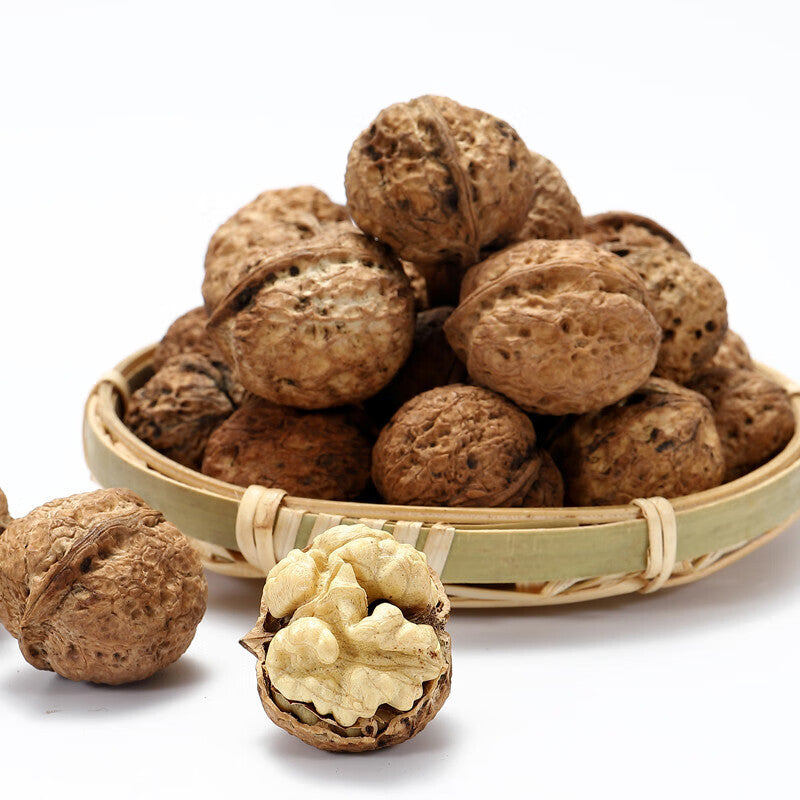Website:Innuts.com
Introduction:
Walnuts are nutritious tree nuts that are widely cultivated for their edible seeds. They have gained popularity due to their rich flavor, versatility in culinary applications, and numerous health benefits. This report provides an introductory overview of how walnuts are grown, including the ideal conditions and cultivation process.
1. Climate and Environmental Conditions:
Walnut trees thrive in specific climatic conditions. The following factors are crucial for successful walnut cultivation:
a) Temperature: Walnut trees prefer temperate climates with distinct seasons. They require a cold dormant period during winter, followed by warm summers. Optimal temperatures for walnut growth range between 15°C to 25°C (59°F to 77°F).
b) Sunlight: Walnut trees need full sun exposure for optimal growth and nut production. A minimum of 6 to 8 hours of direct sunlight per day is ideal.
c) Soil: Well-drained soils are essential for walnut cultivation. Deep loamy soils with good water-holding capacity and adequate drainage are preferred. The soil pH should be between 6 and 7.5, slightly acidic to neutral.
2. Varieties and Propagation:
Walnuts are predominantly grown from grafted trees to ensure desirable characteristics and improved productivity. Some common walnut varieties include:
a) English Walnut (Juglans regia): This is the most widely cultivated walnut variety, known for its thin-shelled, flavorful nuts.
b) Black Walnut (Juglans nigra): Black walnuts have a strong flavor and are primarily grown for their timber, though their nuts are also consumed.
c) Hybrid Varieties: Numerous hybrid walnut varieties have been developed to suit different growing conditions and specific preferences.
3. Planting and Orchard Establishment:
The process of establishing a walnut orchard typically involves the following steps:
a) Site Selection: Choose a location with suitable soil, climate, and access to water resources. Avoid frost pockets and low-lying areas prone to waterlogging.
b) Propagation: Obtain grafted walnut trees from reputable nurseries, ensuring they are disease-free and of high quality. The trees are typically two to three years old when planted.
c) Spacing and Planting: Plan the spacing between walnut trees based on the specific variety and growth characteristics. Generally, trees are spaced around 9 to 12 meters (30 to 40 feet) apart to allow ample sunlight and airflow.
d) Irrigation: Establish an irrigation system to provide consistent water supply, especially during the initial years. Walnuts require regular watering, particularly during dry spells and periods of nut development.
e) Nutrient Management: Conduct soil tests to determine nutrient requirements. Fertilize the soil accordingly to meet the nutritional needs of the walnut trees.

4. Maintenance and Harvesting:
Walnut orchards require regular maintenance to ensure healthy growth and maximize nut production:
a) Pruning: Prune walnut trees during the dormant season to shape them, remove dead wood, improve airflow, and control disease and pest infestations.
b) Weed and Pest Control: Implement weed management strategies to minimize competition for nutrients and water. Monitor orchards for pests and diseases, applying appropriate control measures when necessary.
c) Harvesting: Walnuts are typically harvested in late summer or early autumn, depending on the variety and region. Harvest when the outer husk has split and the inner shell has hardened. Proper handling and drying of harvested nuts are crucial to maintain their quality.
Conclusion:
Walnuts are grown under specific climatic conditions and require well-drained soil, adequate sunlight, and a suitable temperature range. Successful walnut cultivation involves careful site selection, proper propagation techniques, irrigation management, nutrient supplementation, and regular maintenance. By adhering to these guidelines, growers can establish productive walnut orchards and enjoy
please follow lnnuts.com.

